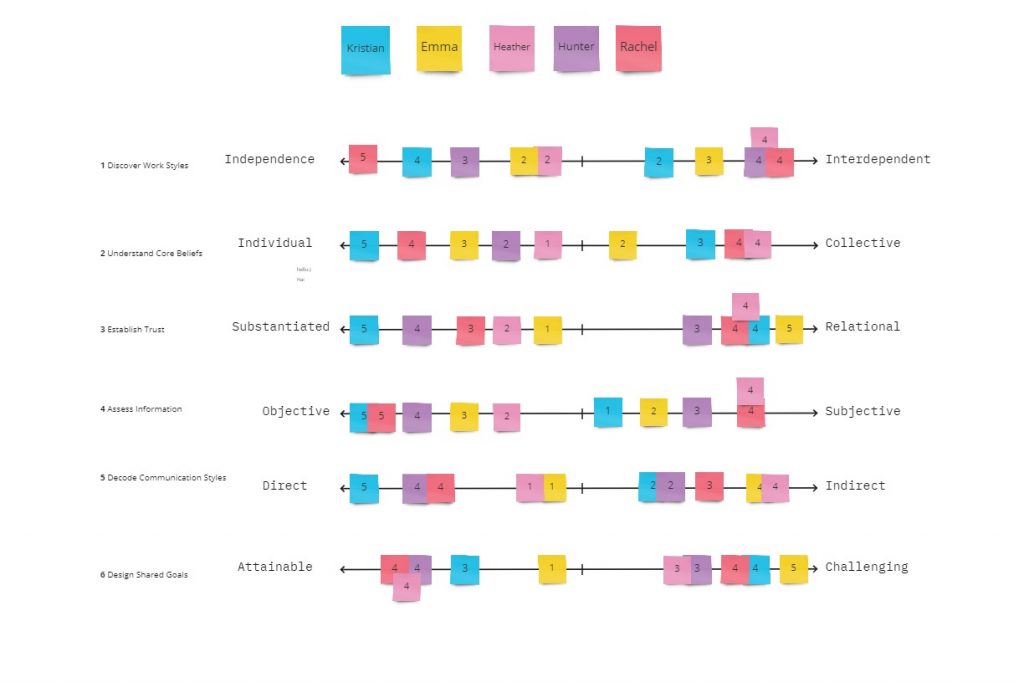Team Building Exercise
Welcome to the Iowa State University College of Design: Global Studio’s summer studio! We are Team 1: Kristian, Emma, Heather, Hunter and Rachel. Our group kicked off Week 1 of Global Studio by participating in a team building activity. Team building activities are sourced from the book, “Intercultural Collaboration by Design.” For any new collaboration, it is helpful to understand each teammates work style and interpersonal behavior. Teams rely on relationship-building opportunities in order to coalesce and thrive. Therefore, we looked at examples in the book and decided to complete one activity called “Discover Work Styles.” This exercise introduced the Six Dimensions of Intercultural Teamwork [1]:

Six Dimensions of Intercultural Teamwork
1) Discover Work Styles
Independent or Interdependent: When our teammates embrace independent and interdependent approaches to work, collectively we feel a sense of both order and chaos over the course of our work together [1].

2) Understand Core Beliefs
Individual or Collective: Knowing that everyone on the team has engaged in this reflective process helps our teammates to cultivate empathy for each other and a sense of belonging [1].

3) Establish Trust
Substantiated or Relational: When it comes to building trust, delivering on promises and tasks, or personal accountability, is another driving force for successful teamwork [1].

4) Asses Information
Objective or Subjective: Diverse teams can help each other understand the world through more focused disciplinary investigations or broader interdisciplinary study, thereby creating windows for exploration of the world beyond one’s personal context [1].

5) Decode Communication Styles
Direct or Indirect: Communication styles are often connected to the roles individuals typically play when working on a team as well as ways such roles might be perceived by other cultures [1].

6) Design Shared Goals
Attainable or Challenging: Having an understanding of at least one aspect of the project can help teammates cope with other uncertainties down the line, such as people changing their minds, introducing conflicting ideas, and navigating the impacts of time difference [1].

Sources
[1] Intercultural Collaboration by Design, Chapter 1: Discover Work Styles (pg. 11-22)